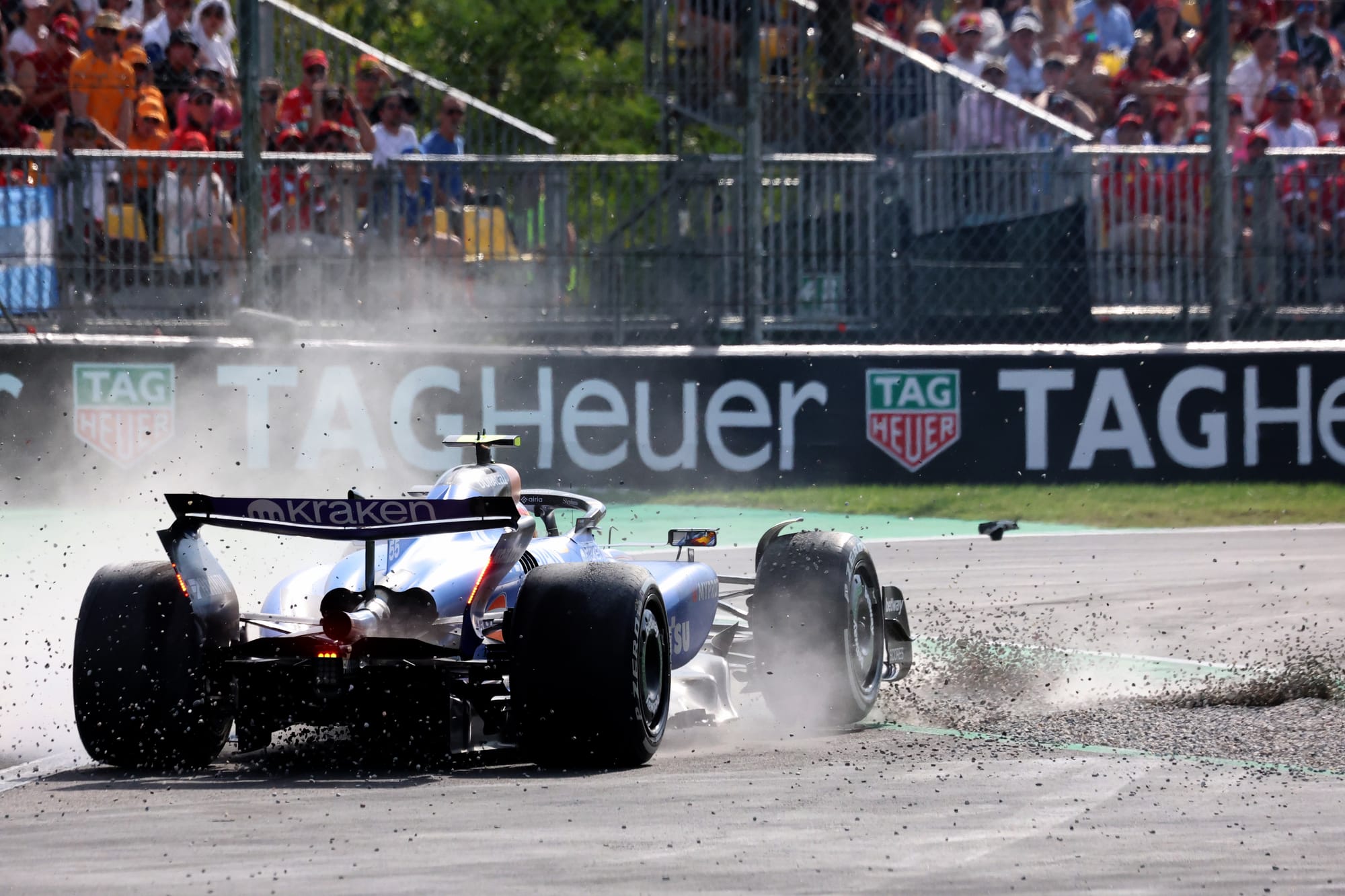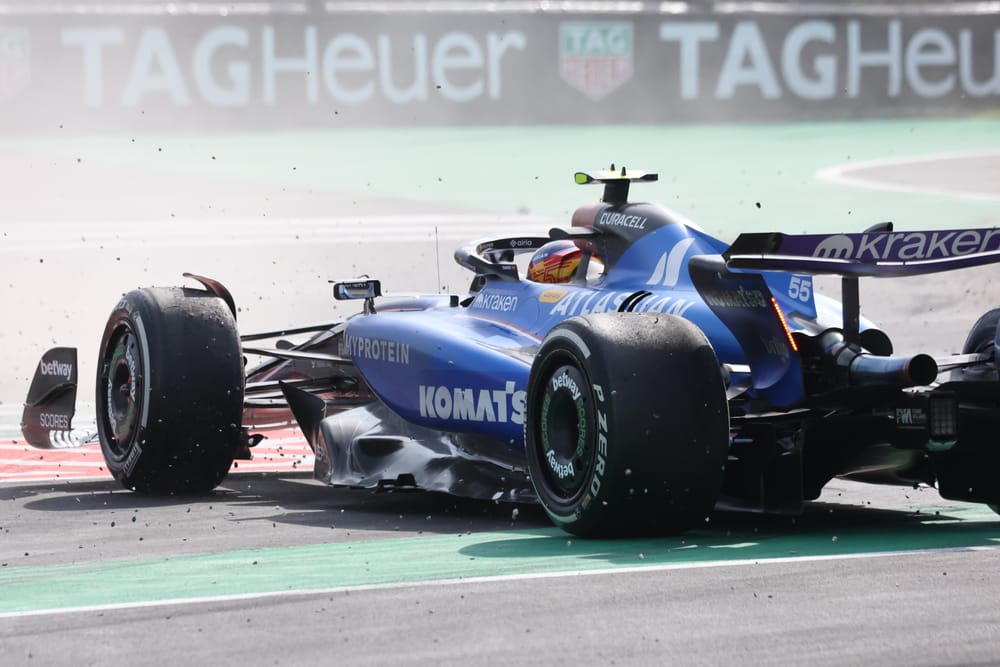Having defended Carlos Sainz last week, to the chagrin of Liam Lawson fans, I must use the same logic to express confusion over Ollie Bearman being penalised in the Italian Grand Prix.
I can see why the basic mechanics of the clash at the second chicane look bad for Bearman. But as with Sainz last week, I just do not understand how this can be deemed a penalty rather than waved off as a racing incident.
The racing guidelines seem too specific in some ways, too vague in others, and often policed too rigidly. They prioritise what the car on the outside must do to be left room in Sainz’s position and there is an absence of information about what responsibility the car on the outside still has to the car on the inside in this scenario.
That seems to be a glaring hole in the guidelines as what room each driver should leave for the other is a fundamental factor in racing hard but fair.
In this case, the stewards established that Sainz had earned the “right to the racing line” by being ahead at the apex, which is essentially identifying this was ‘Sainz’s corner’.

There is nothing wrong with that. Sainz was absolutely entitled to room on the outside of Bearman because he was making a perfectly legitimate move, and had got ahead.
But this was not the same as the incident Sainz had with Pierre Gasly in Hungary, for example, where Gasly was behind going into Turn 2 then blatantly ran deep, did not leave space at the edge of the track, and hit Sainz.
This time, Sainz had room. Bearman did not crowd him out because the contact happened so early that they never got to that part of the track. And for that, you can blame both drivers. Because had Sainz left a little more space, and Bearman still clattered into him, then it’s on Bearman, no question. But this had all the hallmarks of an unnecessary clash with both drivers playing a part, and therefore the definition of a racing incident.
Sainz did not have the move completely done on the outside before the braking zone, even though he was near-as-dammit ahead, with Bearman’s front wing hanging on alongside Sainz’s rear axle as they hit brakes.
Bearman could have just accepted defeat. The stewards even stated that Bearman defended his position “instead of giving up the position”, which is a strange thing to see in an official document as it could be interpreted that Bearman should have just let himself be overtaken. If a car is chasing a lost cause, or out of control, that might be valid - but Bearman did not appear to be and the stewards’ report offers no evidence to suggest otherwise.
Ultimately, Bearman was entitled to try on the inside, closed up under braking and got his front wheels alongside Sainz’s rear wheels well before the corner. As such, Sainz was in total control of what happened next, and his trajectory of the corner is close-to-normal.
Once Sainz committed to that line there was no chance of Bearman avoiding contact because his path was set and he was already as on the brakes as he could be. Sainz saw it differently and argued that he had left a car’s width, which is debatable, as it is hard to see where a car would fit between his inside wheels and the raised kerb at the apex.

He also claimed he had braked so late himself “I don't think the guy on the inside could have braked any later” - but Bearman did and “that’s what caused the collision”. The stewards clearly agreed but it’s a shame their report makes no mention of Sainz’s positioning, or the lack of a car’s width on the inside, or the fact that these things contributed to the incident. Understanding whether or not this has any bearing on a decision any more is quite crucial to working out what is or is not allowed.
The only logical conclusion to draw is that, once again, the racing guidelines have led to a situation whereby all that matters is the location of two cars at a fixed point - in this case, the apex. The consequence of this is that as long as Car X is somewhere relative to Car Y, they can do whatever they like.
This is not going to help racing, which is the whole point of the guidelines. It’s the opposite of that. It takes context and shared responsibility completely out of the equation.
If this continues, the ‘racing incident’ will die out, there will just be blame apportioned more and more, and the obsession over someone being in the right and someone else being penalised will get out of control.



